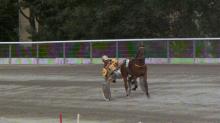"Explore options for OLPF/anti-aliasing filters. The three sensor options would each need different OLPFs. It might be possible to find a supplier that already makes suitable filters. The filter wouldn't be necessary for all users and are expensive so this will probably be an optional extra? Maybe Apertus could buy in bulk to get a discount for users, or at least point people to a supplier/product. Some kind of mount/fixing point in front of the sensor would need to be designed in." - Dated Nov 2014.
Wiki page - https://wiki.apertus.org/index.php/AXIOM_Beta/OLPF
Optical Low-pass Filter (OLPF)
An Optical applications optical low-pass filter is used to reduce/eliminate moire and aliasing artifacts which would otherwise be visible when filming some types of subject matter (detailed repeating patterns like meshes, grills, brick walls). Although post-production workarounds exist, they aren't usually as effective and remnants of moire will often remain.
For a filter to be effective and also not excessively blur the image, it needs to be designed for a specific sensor pixel size. The Cmosis CMV12000 and CMV2000 have the same pixel size (5.5µm), but the Kodak On-Semi KAC12040 is 4.7µm. A different filter might be needed for the latter.
Filters of different thickness and refractive indexes placed between the back of the lens and sensor will shift the back focus to some degree. Any combination of OLPF and IR/UV filters needs to be carefully designed to avoid this. A buyer might request a camera without an OLPF, but still with an IR/UV filter. How can this be accommodated? Some filter manufacturers sell combined OLPF/UV glass of varying thickness which might be a solution.
Design considerations:
- IR/UV filters might also introduce a color bias which would need to be corrected as part of the camera calibration process
- Should the filter be removable by the end-user?
- Should it be hot-swappable on location (no special tools required)?
- Should it be fitted 'as standard' or as an optional extra?
Typical cost for a Super35/APS-C sized filter seems to be around $200/€187 - Red sell one for their cameras at this price.
A Twitter poll ran to get user feedback. Question; "How important is an Optical Low-Pass Filter (OLPF/AA-filter) for you?". Results on 2017-04-06;
- 42% 'not important'
- 32% 'quite important'
- 26% 'essential'
So a combined 58% of users opted for either quite important or essential.
List of possible manufacturers:
http://www.optics-online.com/lpf.asp
http://www.made-in-china.com/manufacturers/olpf.html
http://www.made-in-china.com/showroom/eddiet1716/product-detaileqjxuOYMYJfA/China-Optical-Low-Pass-Filter-OLPF-.html
http://www.made-in-china.com/showroom/refet88/product-detailRMtJbgsUhDky/China-OLPF-Crystal-Filter.html
http://www.made-in-china.com/showroom/jiujonshane/product-detailBMKmSRtdEbcU/China-Olpf-Optical-Low-Pass-Filter-.html
http://www.mosaicengineering.com/products/olpf.html
Todo:
Draft a template email for potential manufacturers asking if they can supply filters of the correct specification for the Beta camera. Also check on availability of smaller sample pieces and costs.
